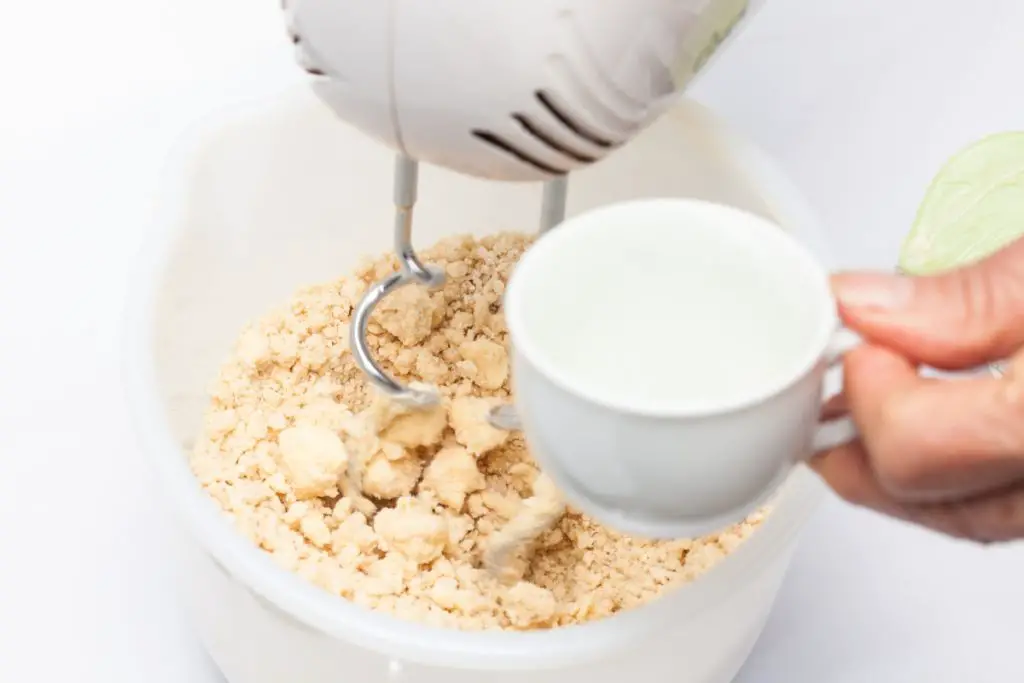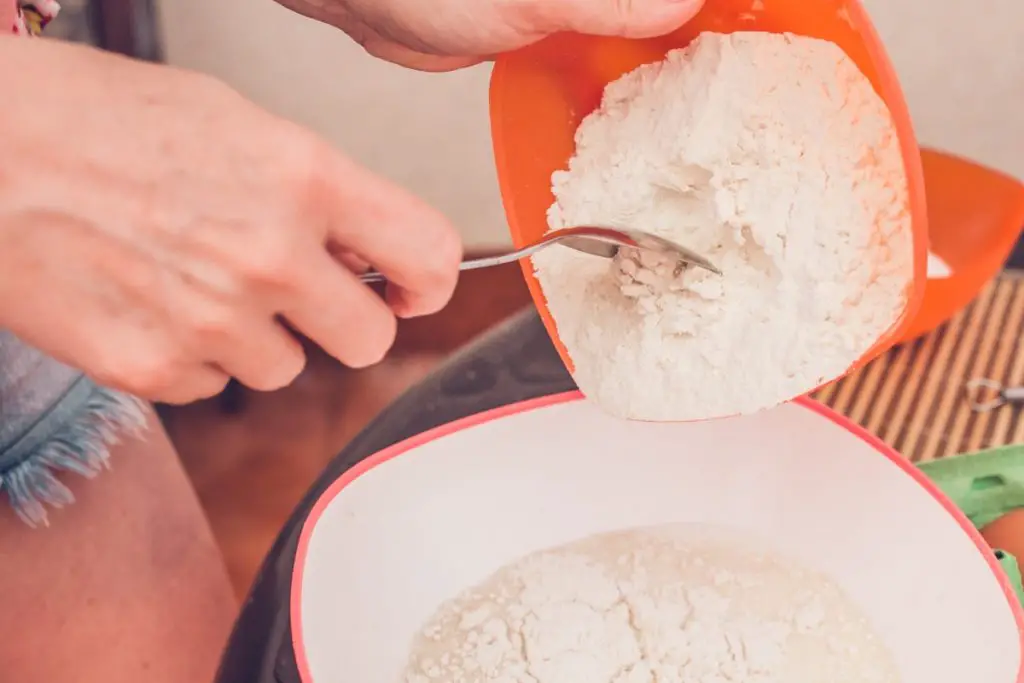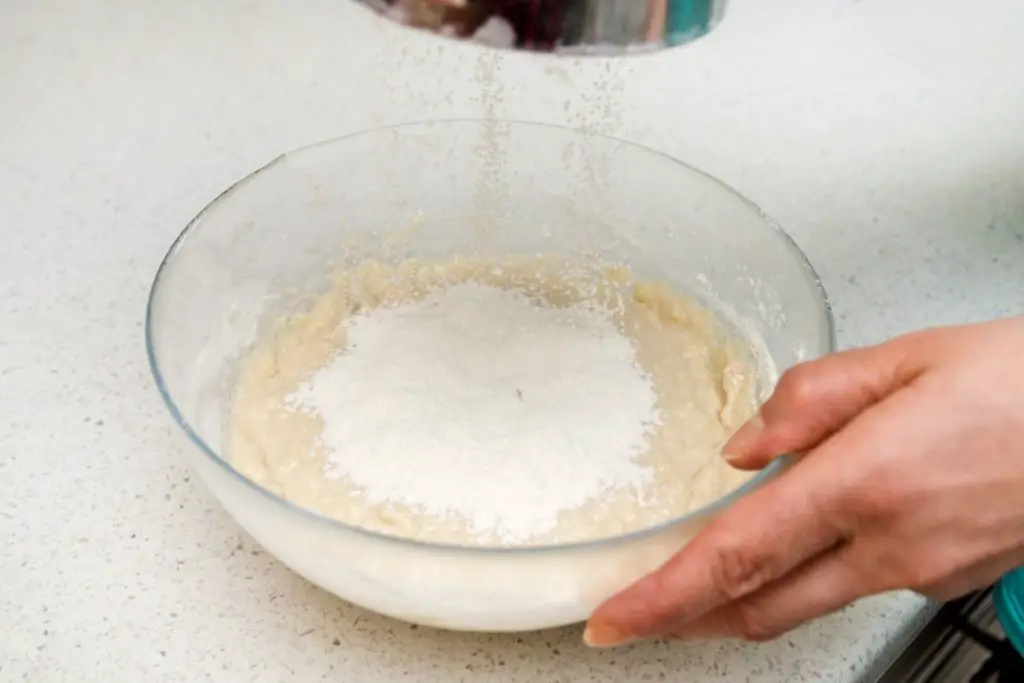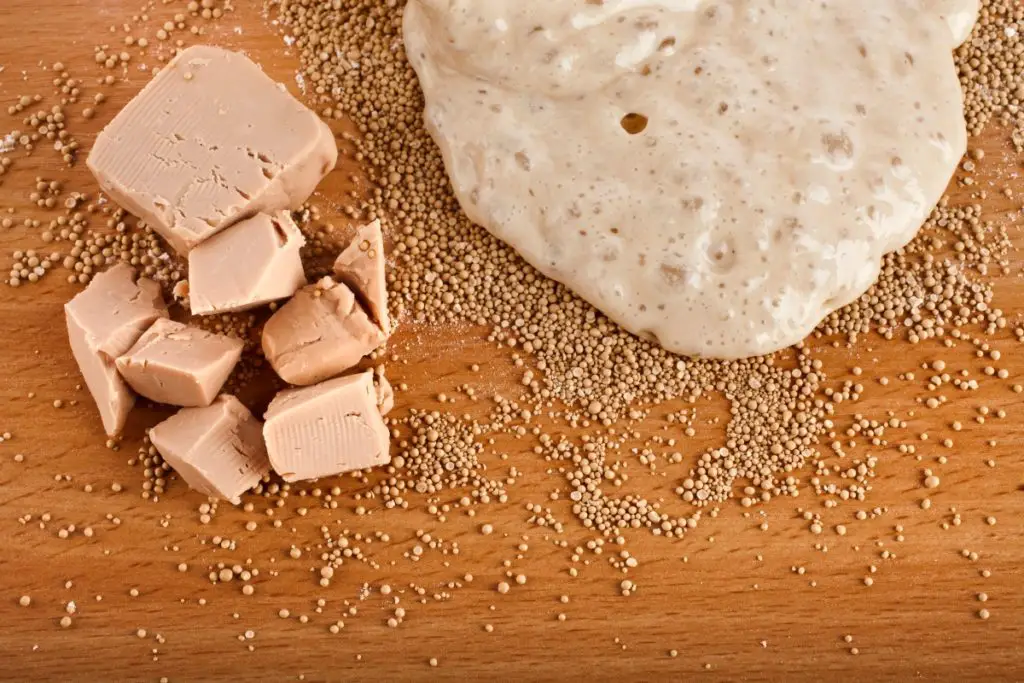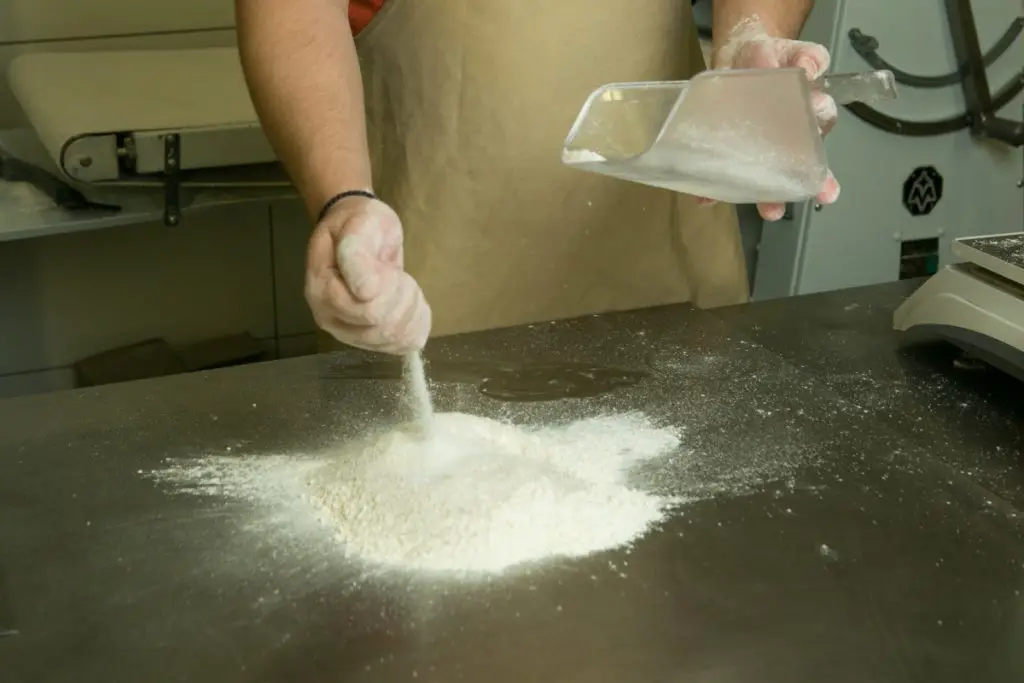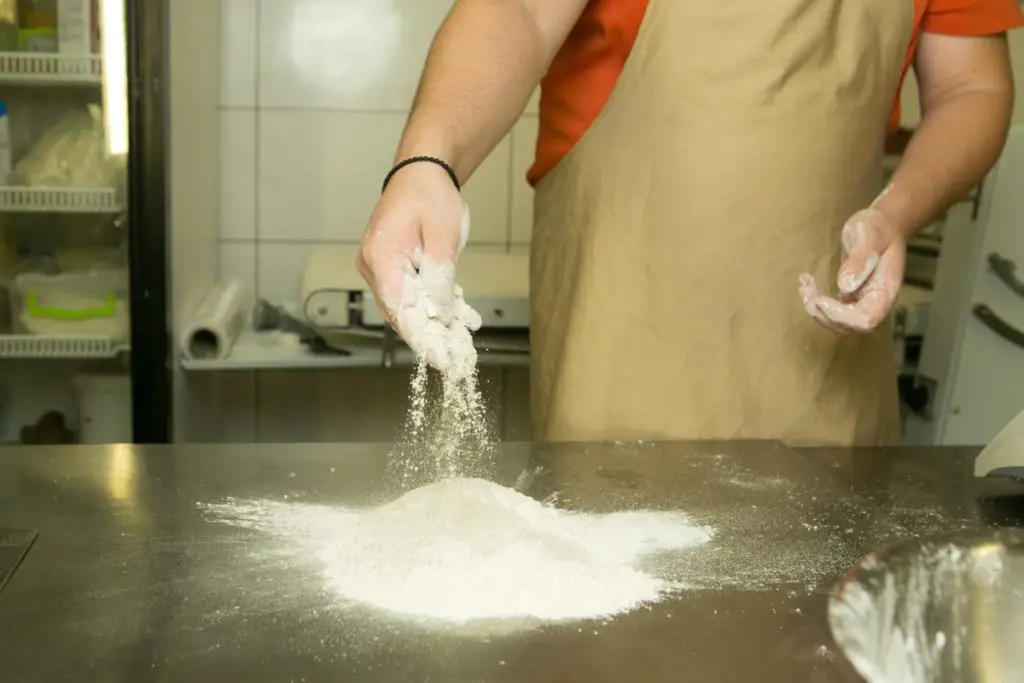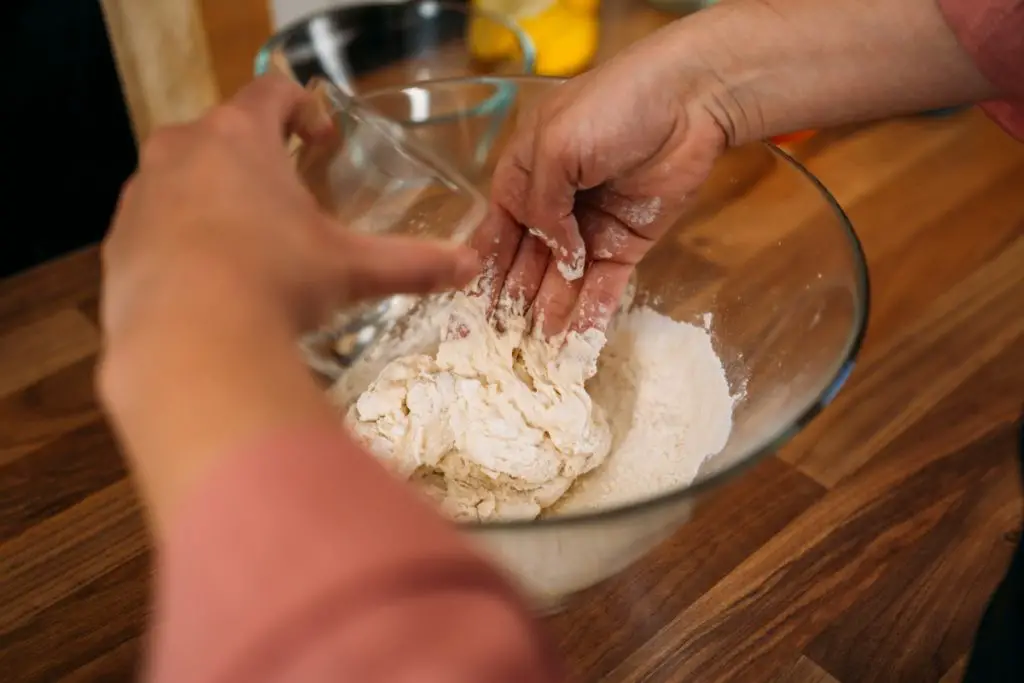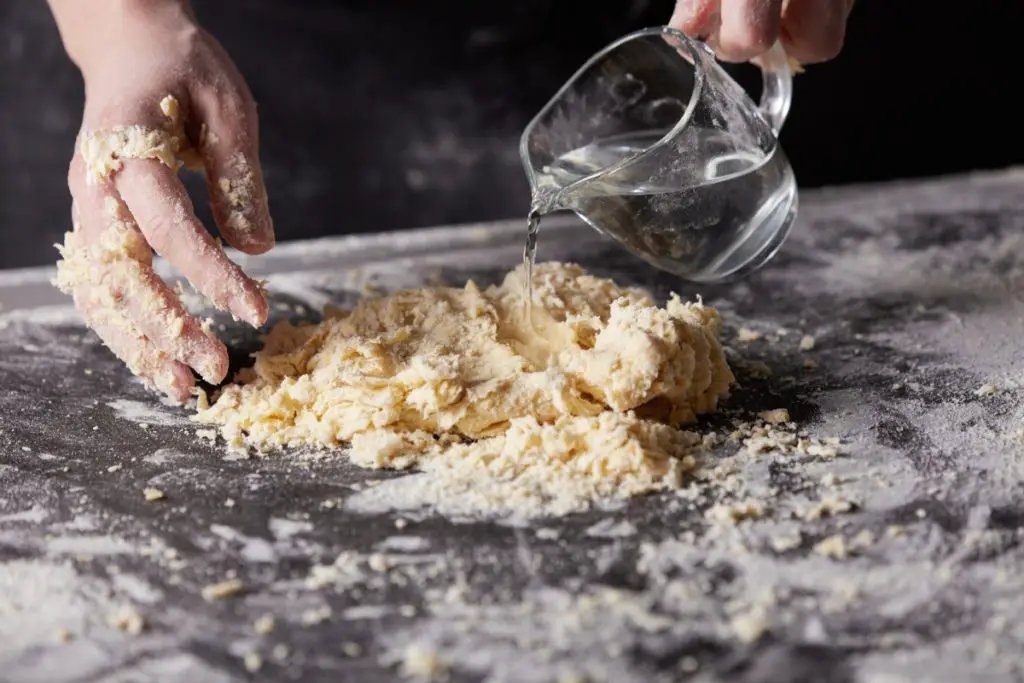As a new baker baking with yeast, you may have a few questions about its purpose and how to use it. This guide to yeast in bread dough gives you a complete rundown on why to add it, when, and how much.
Yeast is necessary for bread; the bread would not rise without it. All bread requires yeast as a leavening agent to expand and become softer and lighter. Yeast adds to the flavor of the bread and gives the bread a better crust. The flour ratio determines the amount of yeast required.
There’s a lot to understand about the use of yeast in baking bread and a lot that can go wrong if you do it incorrectly, so let’s examine this topic in more detail.
Why Put Yeast In Bread Dough
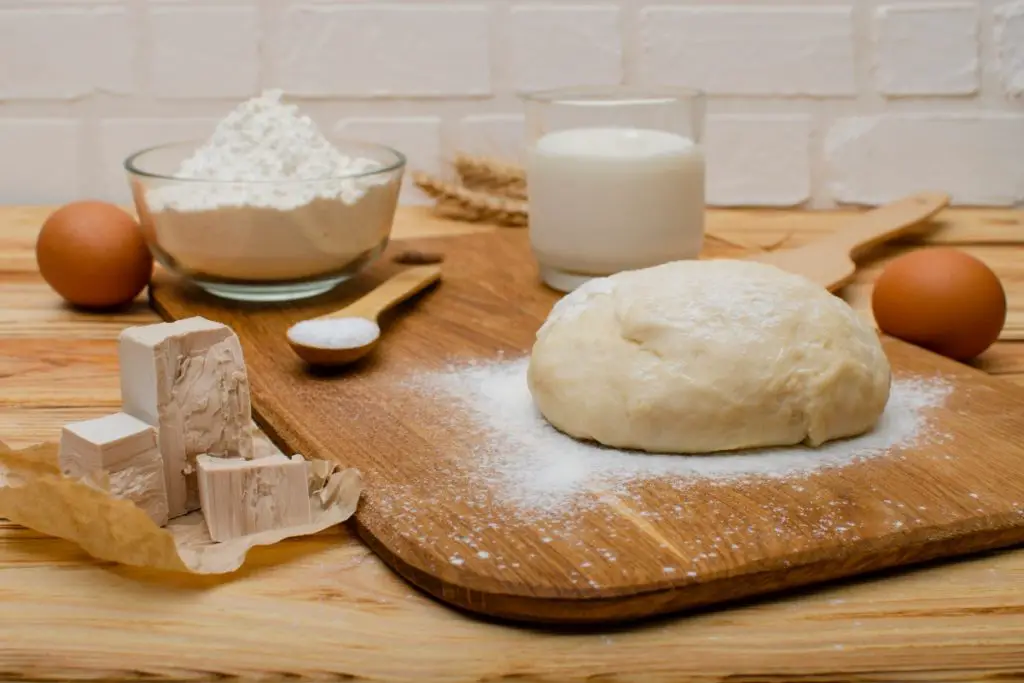
If you’ve just started baking, you probably understand that you need flour to get bread and that you need water to make a dough. Yeast helps develop the fluffy structure of bread and adds to its flavor.
Yeast affects the development of gluten in bread dough. Yeast develops and strengthens the gluten network, which helps keep the whole structure of the bread together. The gluten network helps to trap the bubbles of gas that give bread its fluffy texture and makes the dough rise.
Why Do Bakers Add Yeast To Bread Dough
Bakers add yeast to bread dough as a leavening agent to produce a soft, pillow-like texture in bread products such as loaf bread, cinnamon rolls, dinner rolls, and pizza dough.
A leavening agent ensures that the bread will be full of small holes, making it light and fluffy instead of a hard, solid lump.
A leavening agent is anything that will release carbon dioxide into the dough before you knead it. The bubbles of carbon dioxide gas released by the leavening agent create little pockets of gas throughout the dough, which form the structure of the bread when you bake it.
Different leavening agents include:
- fresh yeast
- dried yeast
- sourdough
- baking powder
- baking soda
Yeast also produces alcohol that evaporates as the bread bakes, which enhances the leavening action of yeast compared to alternatives such as baking powder and adds to the bread’s flavor.
Yeast affects gluten development, particularly if you are using a no-knead bread recipe.
A no-knead recipe calls for putting the dough in the fridge. While the bread dough sits in the refrigerator for many hours, enzymes in the flour gradually break the gluten proteins down into smaller pieces that can more easily form a network. This process is known as autolysis.
The gluten network forms from tiny, invisible movements resulting from gas bubbles from the fermenting yeast.
The gas bubbles slowly move about in the dough, and that movement pushes the gluten proteins in the bread dough around so that they form a network without you having to knead the dough.
Why Does Bread Dough Rise When Yeast Is Added
Yeasts are tiny, single-celled fungi that break glucose down into the following components:
- carbon dioxide
- ethyl alcohol
- flavor molecules (organic acids)
- energy, which the yeast uses to live off
If there isn’t glucose in the environment, yeast uses enzymes to convert other sugars and starches into glucose.
Flour contains starch, composed of long chains of glucose and other sugars. Flour has enzymes that break the starches down into simple sugars after rehydrating the flour.
The yeast then breaks down the sugars in a process known as fermentation.
Fermentation is the same process used to ferment alcoholic drinks (ethyl alcohol is also known as ethanol and is the alcohol that people drink). The yeast typically used in baking, Saccharomyces cerevisiae also has a vital role in brewing beer.
When yeast is added to the bread dough, it breaks down the simple sugars in the wheat flour and releases carbon dioxide and ethanol.
The carbon dioxide and ethanol bubbles get trapped in the dense bread dough. These bubbles cause the dough to rising and proof (dough volume increases).
When the yeast breaks the glucose down to release energy, it forms two molecules of carbon dioxide and two molecules of ethanol for every molecule of glucose.
At room temperature, the ethanol is liquid. When you bake the bread, the ethanol gradually evaporates, forming gas bubbles that assist the carbon dioxide in helping the bread to rise.
The bubbles expand at room temperature or as the bread bakes in the heat of the oven, causing the dough to rise. The dough sets as the heat act on the gluten structure, causing the bread to set with the fluffy texture locked in.
What Happens If You Don’t Put Yeast In Bread
Find a list of common situations that happen if you don’t put yeast in bread:
- If you don’t put yeast in dough, it will fail to rise unless you add an alternative leavening agent such as baking powder.
- If you are cutting yeast out, you could try baking bread with baking powder or a combination of baking soda and an acid.
- If you intended to add yeast to the dough, but you forgot to, and it hasn’t risen, you can either add the yeast later or roll the dough out flat and make flatbread from it.
- You can cook flatbreads such as chapatis on the stovetop in a frying pan. They form a dense, thin sheet, not the fluffy, tall loaves you are familiar with.
- Alternatively, if you did add some yeast, but the dough hasn’t risen properly, you could try making pizza. This result is usually because of adding yeast that is past its expiration date and is dead.
- If you get distracted and do not notice that your dough has not risen, and you bake it anyway, you will end up with a very dense, chewy mass that you may as well discard.
TIP: Not sure if you have all the necessary bread baking equipment at home? Check out my recommended picks below (Amazon links):
-
- Scale: Nicewell 22lb Digital Kitchen Scale
- Mixing Bowls: OXO Stainless Mixing Bowls Set
- Pastry Scraper: OXO Stainless Pastry Scraper
- Loaf Pan: OXO Non-stick Loaf Pan
- Kitchen Thermometer: ThermoPro Digital Thermometer
- Stand Mixer (optional): Kenwood Kmix Stand Mixer
TIP: You might be interested in reading this article too:
Flour In Bread Dough: Why, When & How Much (Complete Guide)
When To Add Yeast To Bread Dough
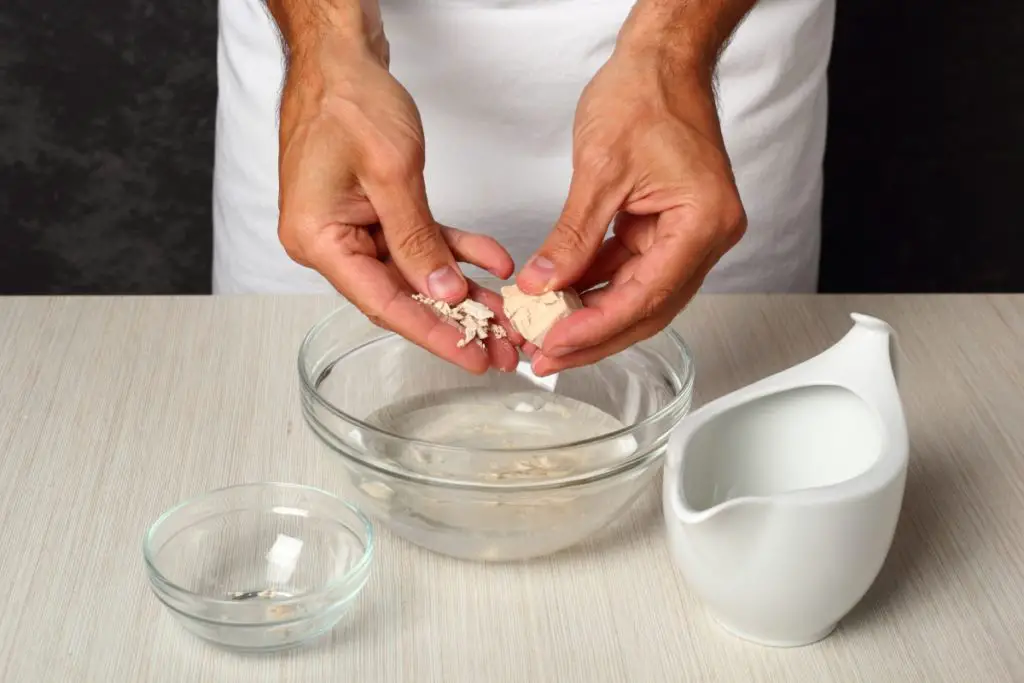
You may be wondering when to add yeast to bread dough, among other questions.
Rapid dry yeast and instant dry yeast granules can be added directly to the dry ingredients for the bread dough. Warm liquid is then added to the dry ingredients to activate the yeast. Active dry yeast should be proofed before adding to the dry ingredients to ensure that it is alive.
Store dry yeast in the freezer. Instant yeast, also known as fast-acting or fast-rising yeast, can be stored in a cool, dry place.
Proof your yeast before using it to test that it hasn’t expired and is still alive and can ferment the dough’s sugars. It will take only ten minutes and may well save you disappointment when your dough fails to rise as expected.
Because yeast is a living organism, if it is near or past its expiration date, or you have kept it under less-than-ideal conditions, not enough living yeast cells may remain to create the bubbles of gas required to make your bread rise.
The two kinds of yeast that require proofing are:
- active dry yeast
- fresh active yeast (also called compressed yeast or cake yeast because it comes in a ‘cake’).
You should not prove:
- instant yeast
- rapid-rise yeast
- bread machine yeast
These yeasts will lose their rapid-rising ability if you dissolve them in liquid.
When you’re ready to proof dry yeast, put a package in half a cup of slightly tepid water (100-110 °F/38 to 43 °C). Hot water will kill the yeast before it’s had a chance to ferment.
Add one teaspoon of sugar for the yeast to work on. Mix it with a teaspoon, and let it stand 5 to 10 minutes in a warm (but not hot) place. Add it to the dry ingredients once the yeast shows plenty of bubbles.
You can substitute equal quantities of dry yeast for instant yeast. Just sprinkle instant yeast in dry form to the flour in your mixing bowl.
Compressed yeast (fresh yeast) does not need to be proofed or suspended in water, and you can crumble it onto the flour.
You will only want to make a suspension of instant yeast or fresh yeast when using a high-speed mixer due to the short mixing time.
If you are baking bread and your dough is failing to rise, you may realize that you forgot to add the yeast. You can still remedy this situation if you haven’t put the dough in the oven yet.
If you have put it in the oven, the oven’s heat will have started setting the gluten network in the dough, and you will have to discard the bread.
But let’s say you’re just wondering why your dough hasn’t risen, and you want to add the yeast. How do you do it?
- Measure the amount of yeast the recipe calls for, and proof it (even if it is instant yeast, rapid-rise yeast, or bread machine yeast).
- Add the dissolved yeast to kneaded but unproofed bread dough. Using your mixer or the dough cycle of your bread machine, fold the yeast into the dough.
- If the dough is overly sticky after adding yeasty liquid, add flour gradually to achieve the right consistency.
- If you are mixing by hand, it should take about 5 minutes to thoroughly incorporate the yeast into the dough.
- Keep kneading or mixing the dough until you have fully incorporated the yeast mixture into the bread dough.
- Remove the dough into a large mixing bowl, cover it loosely, and set it in a warm place until it doubles in volume. Proceed as per the original recipe.
How Much Yeast For Bread Dough
You will use different amounts of yeast depending on what type of bread you are baking. No-knead bread uses a minimal amount of yeast (around 1/8 of a teaspoon for a loaf). Artisanal bread also uses lower ratios of yeast to the flour.
We recommend that you follow a recipe to ensure a good loaf of baked bread!
The amount of yeast you use will affect how quickly the dough rises. A reduction in yeast will slow down the production of carbon dioxide, ethanol, and organic acids.
Acidic molecules, such as alcohol weaken the gluten in the dough and make the dough porous and cause it not to rise well or at all. Thus, ironically, adding too much yeast will result in the same problem as not adding yeast: the dough won’t rise.
A smaller amount of yeast ensures that the gluten network remains strong and the bread rises well in the bowl and the oven.
However, using less yeast will result in a slower rise time, as much as twice as long. You can reduce the rise time to some degree by using rapid-rise yeast.
Bear the following in mind:
- No-knead recipes use so little yeast; bakers measure their rise time in days rather than hours.
- Cutting back the recommended 2 to 2 ½ teaspoons of yeast to 1 teaspoon can improve results and give you a more artisanal quality loaf, at the cost of the dough taking longer to ferment and therefore longer to rise.
- Sweet doughs and wholegrain doughs are already slow risers, and we do not recommend cutting down on the amount of yeast called for in the recipe.
- One caveat is that if you are using a bread machine, which uses a higher temperature to raise dough, substituting instant yeast 1:1 for active dry yeast may cause over-rise and collapse of the bread.
- When baking in a bread machine, substitute 75% of instant yeast for the amount of active dry yeast.
What Is The Ratio Of Yeast To Flour (500g Flour, 1kg Flour, 2 Cups, 3 Cups, And More)
The recommended ratio of yeast to flour depends on the amount of flour you are using.
You can make more loaves simply by doubling or tripling all of the ingredients in the recipe, including the yeast.
Depending on the recipe and the desired rising time, you may use anything from 1 teaspoon of instant yeast or active dry yeast per 4 cups of flour up to 2 ½ teaspoons.
However, many older recipes call for even more yeast than this, so when doubling or tripling the yeast, your dough may rise faster than you can deal with it.
If you find that the dough rises faster than you can get it shaped and baked, reduce the amount of yeast the next time you bake.
We recommend the following ratios:
| Amount of Flour | Amount of Yeast |
|---|---|
| 2 cups | ½ to 1 teaspoon |
| 3 cups | ¾ to 1 ¼ teaspoon |
| 4 cups (480g) /500 g | 1 to 2 ½ teaspoons |
| 1 kg | 2 to 5 teaspoons |
| 1,5 kg | 3 to 7 teaspoons |
TIP: If you are looking for the best flour for your bread I recommend using flour produced by companies mentioned below (Amazon links):
Conclusion
Yeast is an essential part of baking, being the leavening agent that will make your dough rise and perform other vital functions. It does this by fermenting the glucose in the flour into energy, carbon dioxide, and alcohol.
The yeast should be added to the dry ingredients and given time to work on the dough. How much you should use will depend on the kind of bread you want to make.
TIP: Do you know what to do if you add too much yeast to in bread dough? Check out this article:


